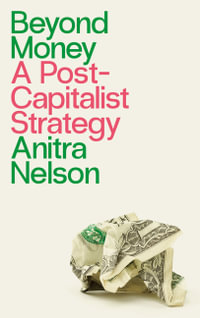A renewed commitment to improved provision of water and sanitation emerged in the 2002 Johannesburg Declaration on Sustainable Development. Although many of the statements in the Declaration were vaguely worded, making it hard to measure progress or success, the Plan of Implementation of the Summit, agreed by the delegates to the conference, clearly stated that: 'we agree to halve, by the year 2015, the proportion of people who are unable to reach or to afford safe drinking water and the proportion of people who do not have access to basic sanitation'. Given the United Nation's predicted growth in global population from 6.1 billion in 2000 to 7.2 billion by 2015, this commitment will pose formidable challenges. To meet it, by the end of just a decade and half, approximately 6.6 billion people will need to have access to safe drinking water supplies. This is more than the current population of the world, and involves not only maintaining existing levels of supply but also providing new or upgraded services to 1.7 billion people. The challenge for sanitation is equally daunting: 5.8 billion people will need to be serviced, including new access provision for 2.1 billion.
Even if these ambitious targets are met, representing a major achievement for the global community, there will still be approximately 650 million people in the world without access to safe drinking water and 1.4 billion without sanitation. What is clear from the is the magnitude of the problem facing the international community in terms of water supply and sanitation. Continuation of the status quo and the type of progress made during the 1990s will not permit the Johannesburg targets to be met. Instead it will be necessary to promote a combination of many different, new and innovative approaches, each of which will contribute towards the overall targets. These approaches must include technological advances that identify new sources and improve the quality of those already in use; managerial techniques that increase the efficiency and effectiveness of service delivery at both micro and macro scale; and fiscal approaches that tap into additional financial resources to make improvements affordable.
In the past each of these aspects was seen as primarily the responsibility of government, which supported research into technology, managed supply and disposal systems and provided the funds to pay for them. This view has changed -- beginning in the 1980s and increasing in the 1990s with growing moves towards privatisation of many aspects of the water sector. Underpinning this has been a shift away from seeing water as a public good that is essential for life, with subsidised supply provided as part of an overall welfare system, to a more market-oriented approach where the state, although still responsible for maintaining universal access to water services, uses market forces to meet this aim. The Business of Water and Sustainable Development aims to illustrate the range of approaches that will be necessary if the percentage of the global population having access to adequate and safe water and sanitation is to be increased in line with the brave assertions from Johannesburg World Summit on Sustainable Development.
Some of approaches will be large-scale 'Western-style' improvements involving the creation of new business models, their effectiveness assessed by traditional approaches of fiscal and social analysis. Such schemes may be instigated and partly funded by governments, but are increasingly turning to the private sector for money and expertise. In contrast, many smaller communities would be better served by following another path to improved water supply and sanitation. Because of their size, location or traditions they may achieve better results through the adoption of local small-scale solutions. Non-governmental organisations have been very active in this area, but to extend their operations many are seeking to adopt a more business-like model. All water supply and waste disposal agencies, large or small, need to support and encourage continued research into technological solutions that seek out better, more sustainable ways to use our increasingly scarce supplies of good-quality fresh water.
Industry Reviews
...The Business of Water and Sustainable Development ... ranges over many issues such as smart metering, ecological sanitation in developing countries, demand management and water pricing. There are five parts: 1. General theory; 2. Privatization; 3. Technology and regionally focussed case studies; 4. on the rural environment; and 5. on the urban environment. The first part on theory discusses what is perhaps the most thorny issue relating to water: whether it is a good or a right. Should water be free? The answer the book provides is No stating that such a right would be worthless when the river runs dry. The five chapters under the part on privatization show no clear cut agreement for and against but conclude that the private sector has significant role to play and that the negative effects of private sector involvement need to be carefully managed. The part on technology has chapters on geothermal energy for desalination, dry sanitation options, water metering and water for isolated communities. Broken hand pumps litter South Africa because the local population cannot repair and maintain them. Sustainable technology means the local communities must be able to maintain equipment. Low tech solutions are just as important as high tech solutions. The part on case studies discusses how important it is to deal with social systems and agricultural reforms. For example, certain crop species in Mediterranean areas require too much water for irrigation and should not be subsidized. Reasonable access to basic safe water is defined by the World Health Organization as 20 litres of clean water per capita from a source within 1 km. of the person's home. The editors, Jonathan Chenoweth and Juliet Bird have attempted to show how meeting the Millennium Declaration of the UN General Assembly (2000) to halve the proportion of people with no access to safe drinking water can be met * The Gallon Environment Letter Vol. 10 No. 17 (3 October 2005) *
























